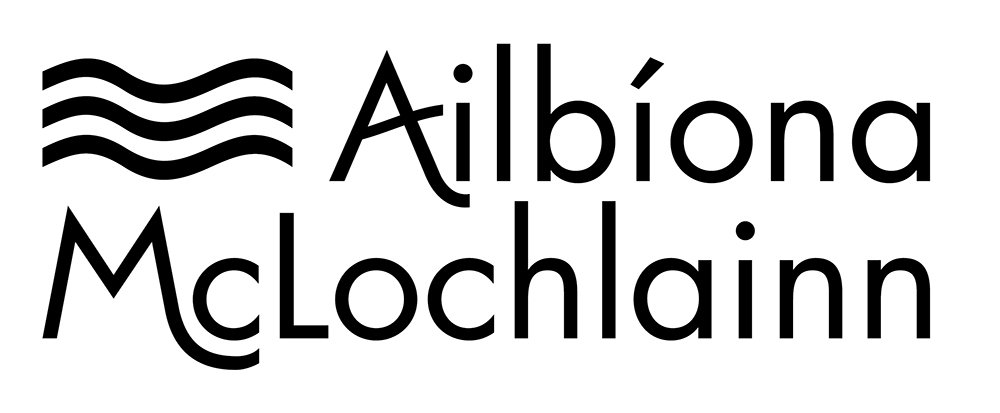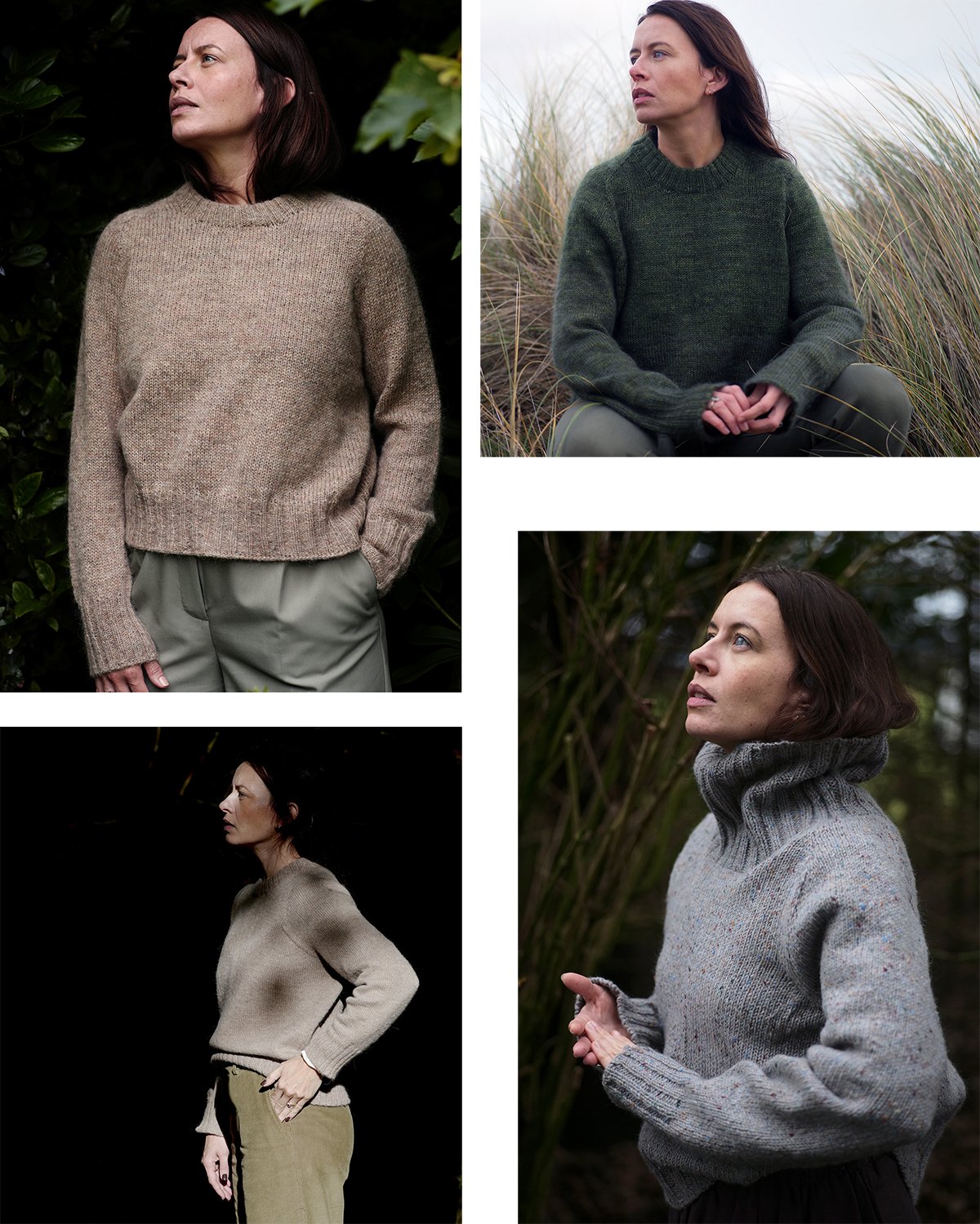Yarn Selection for DK-Aran Weight Garments
One of the benefits of knitting a basic pullover pattern, is that the yarn is the ‘star.’ You control the look and feel of the fabric, and can create very different sweaters using the same pattern simply by varying the yarn.
Consider for instance, the 4 different Saglan Pullover samples shown above. I deliberately chose a neutral pallet, so that you wouldn’t be distracted by differences in colour. But look at the fabric in each photo, and see if you can observe how it affects the character of the sweater design?
Knitted in Nutiden (top left), the fabric looks textured and rustic. Knitted in Drops Puna (bottom left) it looks smooth and silky. Knitted in Bear in Sheep’s Clothing fingering + mohair held together (top right), it looks delicate and fluffy. And knitted in heavy Donegal Tweed from Edel MacBride (bottom right) it looks structured and sculptural.
As those who have knitted from my patterns before are aware, I do not design ‘for’ a specific yarn. I design for a gauge, which corresponds to a range of yarns weights. This way, I can choose my preferred yarns for my pattern samples, and likewise knitters can choose their preferred yarns for their projects, within the suitable range.
My newest pattern, the Saglan Pullover, is designed for a gauge of 18 stitches per 10cm. It is described as ‘suitable for DK-Aran weight yarns, or equivalent.’
Overall, this is probably my favourite gauge/ yarn weight to design with, because I find it extremely versatile. And depending on your preference, you can create a garment at this gauge that looks, feels, and drapes very differently.
For example: Choosing a yarn toward the DK end of the weight range will result in a more airy, open fabric (a woollen spun yarn is recommended if opting for this, to avoid a threadbare look). Whereas choosing a yarn toward the Aran end of the weight range will result in a denser, firmer fabric.
Another possibility at this gauge, is to combine finer yarns to achieve an overall DK-Aran weight equivalent.
For example:
. Fingering weight yarn held double will result in a DK-equivalent. You can even use sock yarns for this.
. Sportweight yarn held double will result in an Aran-weight equivalent.
. 1 strand fingering weight yarn, held together with 1 strand sportweight yarn, will result in what some refer to as ‘worsted’ weight (I do not believe in using this term, but that is a story for another time!) - which is between DK and Aran.
. 1 strand fingering or sportweight yarn, held together with 1 strand laceweight mohair. Despite being technically a lighter weight yarn than DK, this combination is equivalent to DK-Aran and works very well at a gauge of 18 stitches, due to the airy and fluffy nature of mohair.
. Unspun wool (such as Nutiden and &Point - but not Plutulopi, as it is too heavy!) held double.
When combining yarns in this manner, you can of course use strands of the same colour. Or, for even more options, you can use 2 different colours to achieve a marled effect. The possibilities at this gauge really are amazing.
If, after reading all of the above, you aren’t quite sure that your yarn, or combination of yarns, will work with the stated gauge, the only way to determine for certain is to make a swatch.
More specifically, here is what needs to be done:
Knit the swatch. Then block the swatch. Then measure the swatch, to see that the gauge is correct. And then, assuming yes, examine the fabric.
Is the fabric gauzy, see-through, or threadbare? Then your yarn is too fine for the gauge; it is not suitable.
Is the fabric extremely dense and stiff? Then your yarn is too thick for the glue, it is not suitable.
If however the fabric is neither of those things, but looks and feels ‘normal’ and ‘pleasant’ (yes, these are deliberately subjective terms - because ultimately only you can decide!) - with a reasonable degree of density and plasticity, then the yarn is suitable.
The Saglan Pullover is available on ravelry and in my webshop. It is suitable for DK to Aran weight yarns, or any equivalent that works at a gauge of 18 stitches per 10cm.

